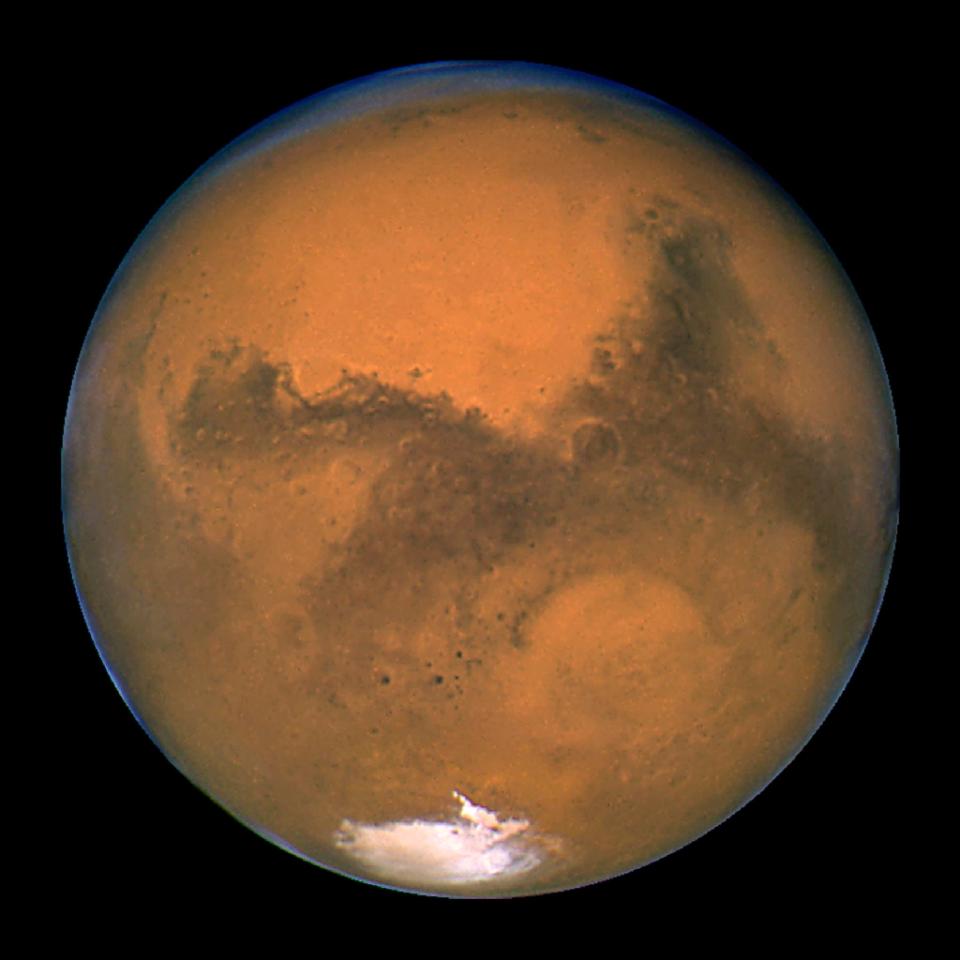Mars gullies likely contain 'no water': studyAFP
By Pascale Mollard-Chenebenoit 18 minutes ago
 This NASA/JPL/University of Arizona image obtained June 7, 2015 shows a close-up of a "fresh" impact crater in the Sirenum Fossae region of Mars captured by the High Resolution Imaging Science Experiment camera on March 30, 2015 (AFP Photo/)
This NASA/JPL/University of Arizona image obtained June 7, 2015 shows a close-up of a "fresh" impact crater in the Sirenum Fossae region of Mars captured by the High Resolution Imaging Science Experiment camera on March 30, 2015 (AFP Photo/)Paris (AFP) - Months after scientists announced "the strongest evidence yet" of liquid water on Mars, a study Monday said there was none at least in the valleys carved into numerous Red Planet slopes.
Rather than water flows like those on Earth, these Martian gullies were likely created by dry ice defrosting, a duo of French scientists wrote in the journal Nature Geoscience.
"The role of liquid water in gully formation should... be reconsidered, raising the question of the importance of its occurrence in Mars' recent past," wrote Francois Forget and Cedric Pilorget of the French national research institute CNRS.
They said their findings held no implications for the headline-making announcement in September that dark lines running down slopes in the tropics of Mars in summer, may be streaks of super-salty brine -- hinting at the presence of life-sustaining water.
Monday's paper dealt with unrelated geological features in a different part of the planet, mainly in the mid-latitude range between 30 and 60 degrees, on pole-facing cold slopes, said the French team.
They had set out to explain the origins of small channels carved into crater walls, hills and other martian protrusions.
 Image captured by NASA's Hubble Space Telescope shows a close-up of the Red Planet Mars when it was just 34,648,840 miles away (AFP Photo/)
Image captured by NASA's Hubble Space Telescope shows a close-up of the Red Planet Mars when it was just 34,648,840 miles away (AFP Photo/)When first discovered, these gullies were interpreted as runoff from melting water ice or groundwater leaks that occurred hundreds of thousands of years ago.
Then, in recent years, it was discovered that gully formation was ongoing, in spite of Mars being too cold for liquid water to exist.
Pilorget and Forget looked for answers in a thin layer of frozen carbon dioxide (CO2) observed to be present in periods that gullies were being formed.
They used computer simulations to show that thawed and trapped CO2 gas building up beneath the surface ice layer would eventually break through the soil and trigger flows of gas and debris.
No similar processes are known to occur on Earth.
 This NASA image obtained October 9, 2015 shows a view from the "Kimberley" formation on Mars taken by NASA's Curiosity rover (AFP Photo/Handout)
This NASA image obtained October 9, 2015 shows a view from the "Kimberley" formation on Mars taken by NASA's Curiosity rover (AFP Photo/Handout)Pilorget, an astrophysicist, said dry ice melt may not be responsible for all gully formation on Mars, but in cold areas with very young gullies, the gassy theory "must be favoured."
Nothing could be excluded, though, and "other complimentary processes may be at work," he said.
"For example, gullies have been detected in regions closer to the equator which are probably created by different mechanisms," he told AFP.
In September, scientists said seasonal streaks on Mars dubbed "recurring slope linaea" may be briny flows.
They found evidence of hydrated salt minerals in the lines, which they said implied liquid water was present, even as others cautioned against reading too much into the results.
"Our study has no link to the announcements made in September," said Forget, a planetologist.
"Our findings show that at least some gullies, maybe all, do not have liquid water and that the areas where they are found are not conducive to hosting liquid water, or life."
It is widely accepted that the Red Planet once had plentiful water in liquid form, and still has some today -- albeit frozen in ice underground.
Earlier this year, NASA said almost half of Mars' northern hemisphere had once been an ocean, reaching depths greater than 1.6 kilometres (one mile).
http://news.yahoo.com/mars-gullies-likely-contain-no-water-study-164944711.html
![]() 6 new categories and 72 new items added to the shop!
6 new categories and 72 new items added to the shop!![]() 6 new categories and 72 new items added to the shop!
6 new categories and 72 new items added to the shop!




















 Select your theme
Select your theme
